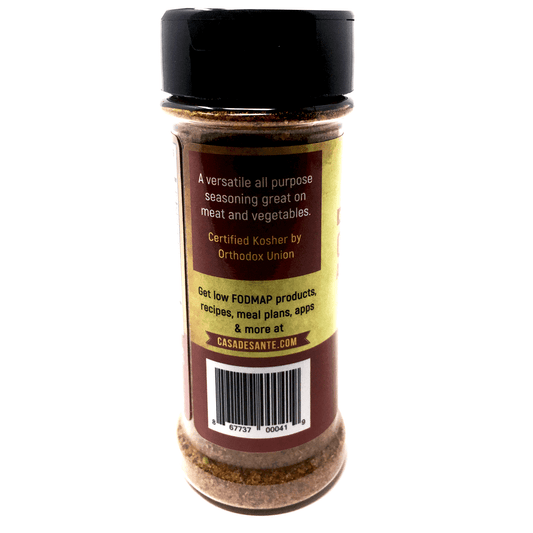
The low FODMAP diet can bring relief to those with irritable bowel syndrome (IBS) and other digestive conditions. However, what if you have thyroid issues along with such digestive symptoms? Could the low FODMAP diet help relieve symptoms of those with thyroid conditions? Is the low FODMAP diet appropriate for such patients? Let’s learn a little more about the thyroid condition known as Hashimoto’s disease and how the low FODMAP diet may help those with the condition.
What is Hashimoto’s disease?
Hashimoto’s disease is a type of autoimmune disorder that can cause what is known as hypothyroidism. In other words, the immune system attacks the thyroid and causes damage. In turn, the thyroid is unable to make enough thyroid hormones.
If someone develops hypothyroidism as a result of this condition, they may develop a variety of symptoms. These symptoms include fatigue, weight gain, cold intolerance, joint and muscle pain, constipation, and depression, to name a few. Typical treatment of Hashimoto’s is thyroid hormone medication. However, some people have found changes in their diet to improve symptoms as well.
Diet changes that may help those with Hashimoto’s disease
Experts suggest that a diet rich in iodine, selenium, and zinc could help improve symptoms in those with Hashimoto’s disease. Iodine is needed to help with thyroid production in the body. Dietary iodine can be found in dairy products like milk and cheese as well as shellfish, soymilk, and saltwater fish like tuna.
When it comes to selenium, this mineral plays a role in thyroid hormone metabolism and is found in various foods. Such foods include Brazil nuts, tuna, halibut, sardines, shrimp, and poultry, to name a few. Finally, zinc deficiency has been linked to hypothyroidism. Therefore, those with hypothyroidism should consume foods rich in zinc like oysters, beef, lobster, and chicken.
How the low FODMAP diet could help those with Hashimoto’s disease
In addition to adding the aforementioned foods to your diet, research shows that those with Hashimoto’s disease may benefit from avoiding gluten. This is where the low FODMAP diet may benefit those with this thyroid condition. Although the low FODMAP diet is not necessarily a gluten-free diet, it does avoid a lot of wheat-based foods.
According to Monash University, wheat intake is reduced in the low FODMAP diet due to its high levels of fructans. Because of this, the low FODMAP diet also limits high fructan grains like barley and rye. However, the low FODMAP diet is not gluten-free. Therefore, the low FODMAP diet could provide a jumpstart to those with Hashimoto’s to limit gluten intake and in turn improve symptoms.
So, what foods should I eat to help Hashimoto’s?
If you want to try and improve symptoms of your Hashimoto’s disease, then the following tips may be of help to you. The low FODMAP diet, which includes many of these tenets, may be a good way to help you put your diet on track so you can start feeling better.
- Avoid gluten: Any food or food products containing wheat, barley, or rye should be avoided. The low FODMAP diet can help you get started on limiting such foods, but to help your Hashimoto’s best, it may be more helpful to fully eliminate gluten from your diet.
- Consume some dairy daily: Cheese, yogurt, and milk can help you add some iodine in your diet. However, if you are also dealing with digestive symptoms, then limiting your lactose intake by following low FODMAP practices may also be helpful.
- Eat some seafood weekly: With shrimp high in selenium and oysters rich in zinc, adding in seafood is a low FODMAP way to add these nutrients to your Hashimoto’s-healthy diet.
- Eat more chicken: Chicken is also rich in selenium and zinc, and meets low FODMAP guidelines, as long as it’s not doused in onion and garlic. Therefore, eating more chicken in your diet could help reduce Hashimoto’s symptoms.
If you don’t eat meat or dairy, there are other options for getting such Hashimoto’s-healthy nutrients in your diet. For selenium, there is always Brazil nuts. Just half of one nut can provide a little more than the recommended daily allowance of selenium. Nuts and seeds are also rich in zinc. Two tablespoons of pumpkin seeds, 32 peanuts, or 10 almonds can help you add zinc to your diet while staying in low FODMAP servings.
Take home message
If you have Hashimoto’s disease, you may be able to benefit from changes in your diet. Such changes may include starting a low FODMAP diet regimen. For more information on the low FODMAP, be sure to visit the Casa de Sante website.
-written by Staci Gulbin, MS, MEd, RD of LighttrackNutrition.com
























